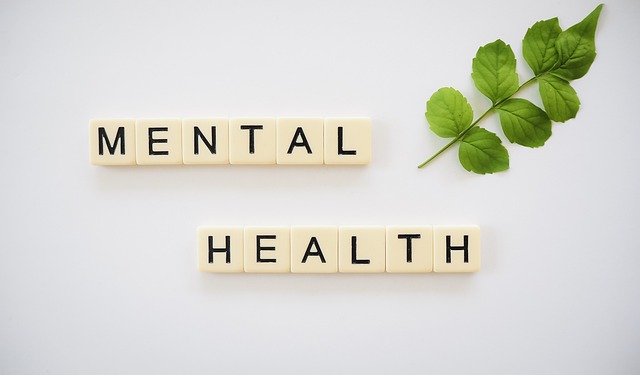In India, mental health remains a largely overlooked issue, even though millions face the silent struggles associated with mental illnesses. The stigma, insufficient healthcare infrastructure, and a lack of awareness create formidable barriers that prevent individuals from seeking help. With recent developments in mental wellness, the rise of digital health platforms like InnerAlly offers a ray of hope. However, the question remains: What more can be done to tackle India’s mental health crisis?
The Scale of the Problem
According to the National Mental Health Survey of India 2015–16, nearly 150 million Indians require mental health care services, but a staggering 80% remain untreated. Mental health issues such as depression, anxiety disorders, and substance abuse contribute significantly to the country’s disease burden. The World Health Organization (WHO) estimates that around 7.5% of India’s population suffers from mental disorders, with depression being the leading cause of disability in India.
While the prevalence is high, what exacerbates the crisis is the absence of adequate mental health care professionals. According to data from the Ministry of Health and Family Welfare, India has only 0.75 psychiatrists per 100,000 people, compared to the global average of 3 psychiatrists per 100,000. This glaring gap in resources is a major challenge in addressing the mental health needs of such a large population.
The Impact of Stigma and Social Conditioning
In India, the social stigma attached to mental illness is profound. Many individuals refrain from seeking treatment due to fear of societal rejection or misconceptions about what mental illness entails. For centuries, cultural narratives have linked mental health issues to weakness, shame, or even spiritual disfavor, leaving individuals isolated and without support.
A NIMHANS study found that 42% of people believed mental illness is caused by “possession by evil spirits” or “fate,” which severely hampers the effort to promote understanding and encourage open conversations. This stigma can also affect career opportunities, relationships, and the willingness to access professional help, leaving individuals to silently battle their conditions.
Gaps in India’s Mental Health Infrastructure
One of the key challenges in India’s mental health crisis is the lack of adequate healthcare infrastructure. The Mental Healthcare Act 2017 was a significant step in ensuring rights for mental health patients, including the right to affordable care. However, the on-ground implementation is far from effective. Government expenditure on mental health remains low, making up less than 1% of the health budget.
Moreover, mental health care is often concentrated in urban centers, leaving rural populations, which make up over 65% of India’s population, largely underserved. Accessibility to therapists, counselors, and psychiatrists in these areas is minimal, forcing individuals to either travel long distances for care or not seek treatment at all.
What Can Be Done?
1. Boost Mental Health Literacy
One of the first steps to addressing the mental health crisis is increasing awareness and literacy about mental health issues. Schools and workplaces must introduce mental wellness programs to normalize discussions around mental health and equip individuals with the tools they need to support themselves and others. Campaigns that encourage open dialogue and challenge traditional stigmas can have a long-term positive impact.
2. Expand Digital Health Platforms
With internet penetration in India crossing 750 million users in 2023, digital platforms like InnerAlly can be pivotal in expanding mental health care access, especially in rural areas. Through teletherapy, mental health apps, and online counseling, individuals can seek help from licensed professionals at their convenience and in privacy. These platforms can also offer resources for mental health education, self-help tools, and community support.
3. Incorporate Mental Health into Primary Care
Mental health needs to be integrated into the primary health care system. In most cases, people visit primary care physicians first, who are not trained in mental health diagnostics. Training general practitioners to recognize and treat common mental health issues can ensure early intervention and reduce the burden on specialized mental health professionals.
4. Increase the Number of Mental Health Professionals
The government must focus on increasing the number of mental health professionals, including psychiatrists, psychologists, counselors, and social workers. This can be done by improving mental health education and offering incentives for students to pursue careers in this field. Additionally, providing scholarships or funding for mental health professionals to work in rural areas can help bridge the accessibility gap.
5. Public-Private Partnerships
Collaboration between the public and private sectors can be a game-changer in addressing the mental health crisis. Government schemes, together with private sector investments and innovations, can significantly expand the reach of mental health services. Companies can sponsor mental health programs or partner with NGOs and digital platforms like InnerAlly to provide support to employees and communities.
The Role of InnerAlly
At InnerAlly, we understand the urgent need for accessible, affordable, and stigma-free mental health care in India. Our platform aims to empower individuals to take charge of their mental wellness by providing easy access to certified therapists and evidence-based self-help tools. We are committed to supporting people from different walks of life, whether in urban cities or rural towns.
By leveraging technology, InnerAlly seeks to fill the gap in India’s mental health infrastructure and encourage more conversations around mental well-being. As we prepare to launch, we are committed to creating a safe and supportive community where individuals can seek help without judgment.
Conclusion
India’s mental health crisis is complex, but with collective effort, meaningful change is possible. Whether through government policy changes, societal attitude shifts, or the rise of digital platforms like InnerAlly, the path toward better mental health care is becoming clearer. It’s time to break the silence, reduce stigma, and build a future where mental health care is not a privilege but a right for every Indian.












